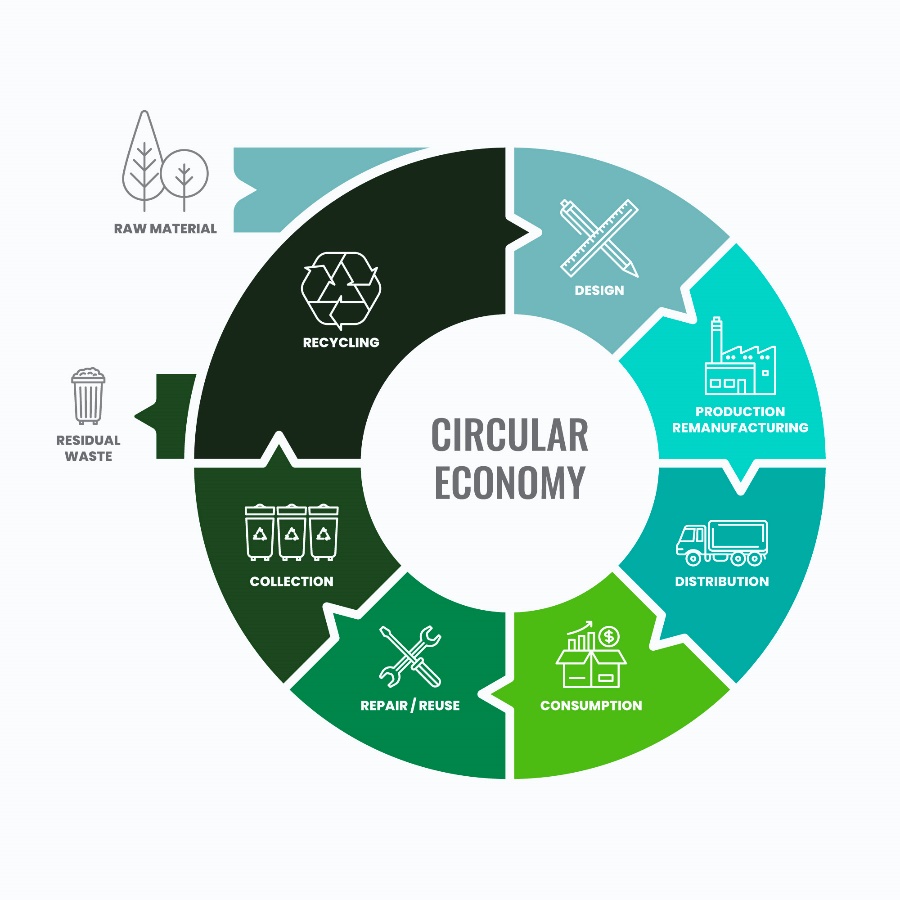2. BUSINESS MODELS FOR THE CIRCULAR ECONOMY
A circular economy business model (CEBM) enables regeneration of finite natural resources and keeps products, components and materials from degradation. Despite the fact that many systems of this type have already been created, they all focus on ways to extend the life of products, their sharing or dematerialisation. We will present seven business models that are in line with the guidelines of the European Commission, as well as research and the proposal of the EU R2 π project.
- Circular raw materials
At the production stage of the circular economy cycle, we can find the circular raw materials model. It consists in basing production on circular raw materials, i.e., those that can be used in a closed circuit. In other words, such raw materials that are recycled or renewable and at the same time can be returned to technical or biological cycles. An example of such a model is virtualisation, i.e., replacing a real product and service with a virtual product or service available online.
- Recovery of by-products
By-product recovery is a business model where residual or secondary products of one process (or value chain) become inputs for another process (or value chain). That is, what is waste for one producer may be a valuable raw material for another. By creating entire ecosystems of companies cooperating in this way, you can not only reduce the amount of waste, but also significantly reduce the costs of obtaining raw materials.

Source: https://pl.freepik.com/
- Modification
This management method applies to the production stage and consists in extending the life of the product by modifying it through repairing, refreshing or improving the aesthetics. It makes the product the same as new or better than the new and obtains extended warranty.
- Repair
This is another example of a model at the production stage of the circular economy cycle. It consists in extending the life of the product by repairing, refreshing or improving its aesthetics, without extending its warranty, but without modifying the product.
- Product as a service
In the new closed-loop model, the manufacturer provides the consumer with constant access to the functionality he needs, not to a one-off product. The product becomes a service, and producers of goods take on the role of service providers. Products as services can be sold in a subscription, leasing or pay-for-use model. Efficiency is more important than quantity, durability is more than disposable. This leads to innovations in product life extension and recovery.
- Access
The so-called “Access” is a business model that can be implemented at the use stage of the circular economy cycle. It consists in providing the end user with access to the product/resource instead of owning it. A classic example of the application of this model are rental companies – from libraries to car renting. In the virtual version, they correspond to online platforms that offer virtual products – such as e-book rentals or streaming services for movies and series or music (like Spotify and Tidal). The user may use the products and resources available there free of charge or for a fee, but may not own them. Another application of this model is sharing platforms. Consumers can rent, share, trade or loan their goods. This is how they earn or save money. Well-known sharing platforms include BlaBlaCar or AirBnB.
- Recycling of raw materials
Recycling of raw materials is a business model, thanks to which it is possible to maximise the economic value of each produced item, and at the same time the life cycle of the raw material is extended. This model can be implemented at the end-of-life stage of the circular economy cycle. It involves the recovery of used materials or products for use in new products, processes or value chains.

 Español
Español Turkish
Turkish български
български Magyar
Magyar Polski
Polski Português
Português